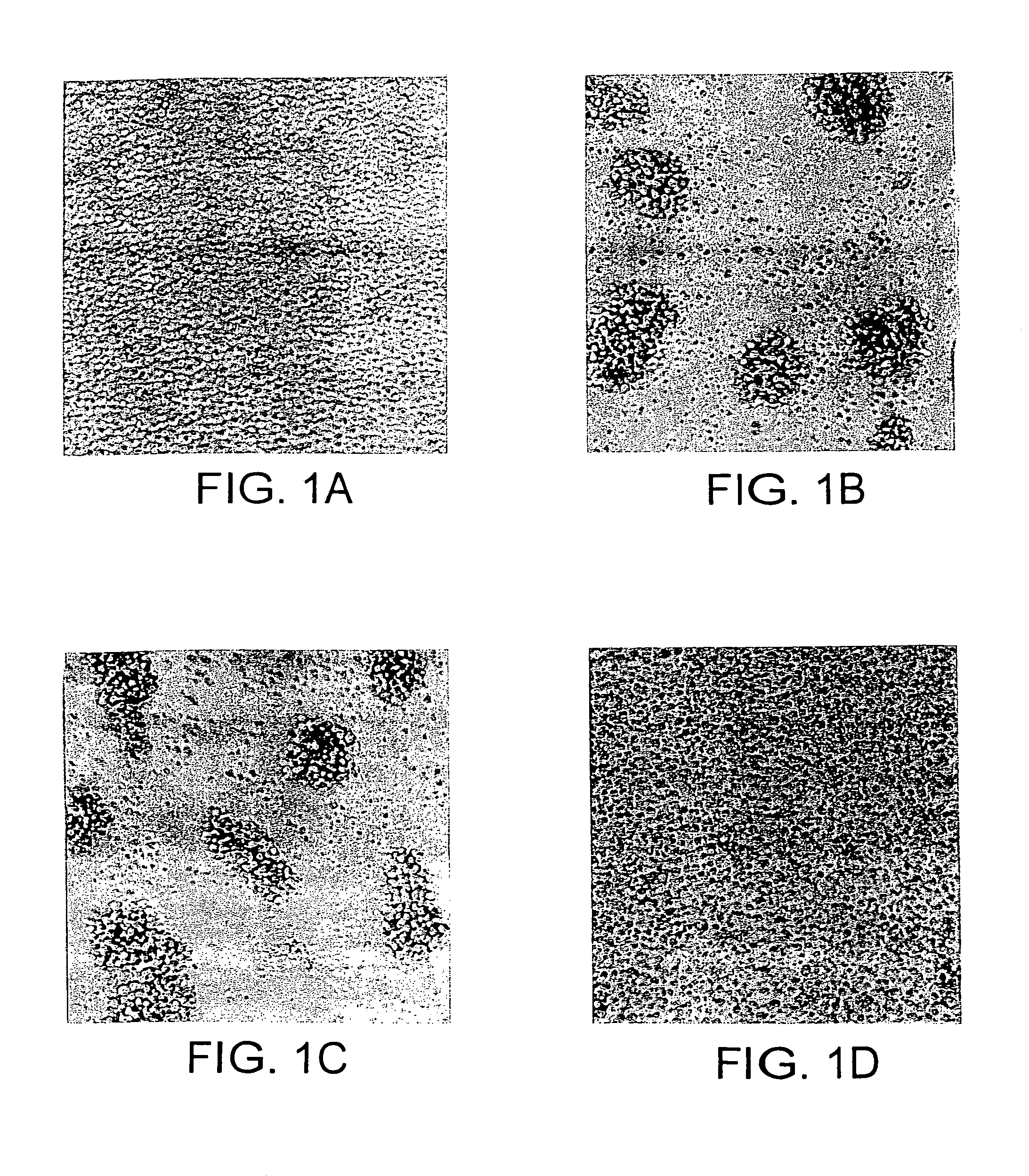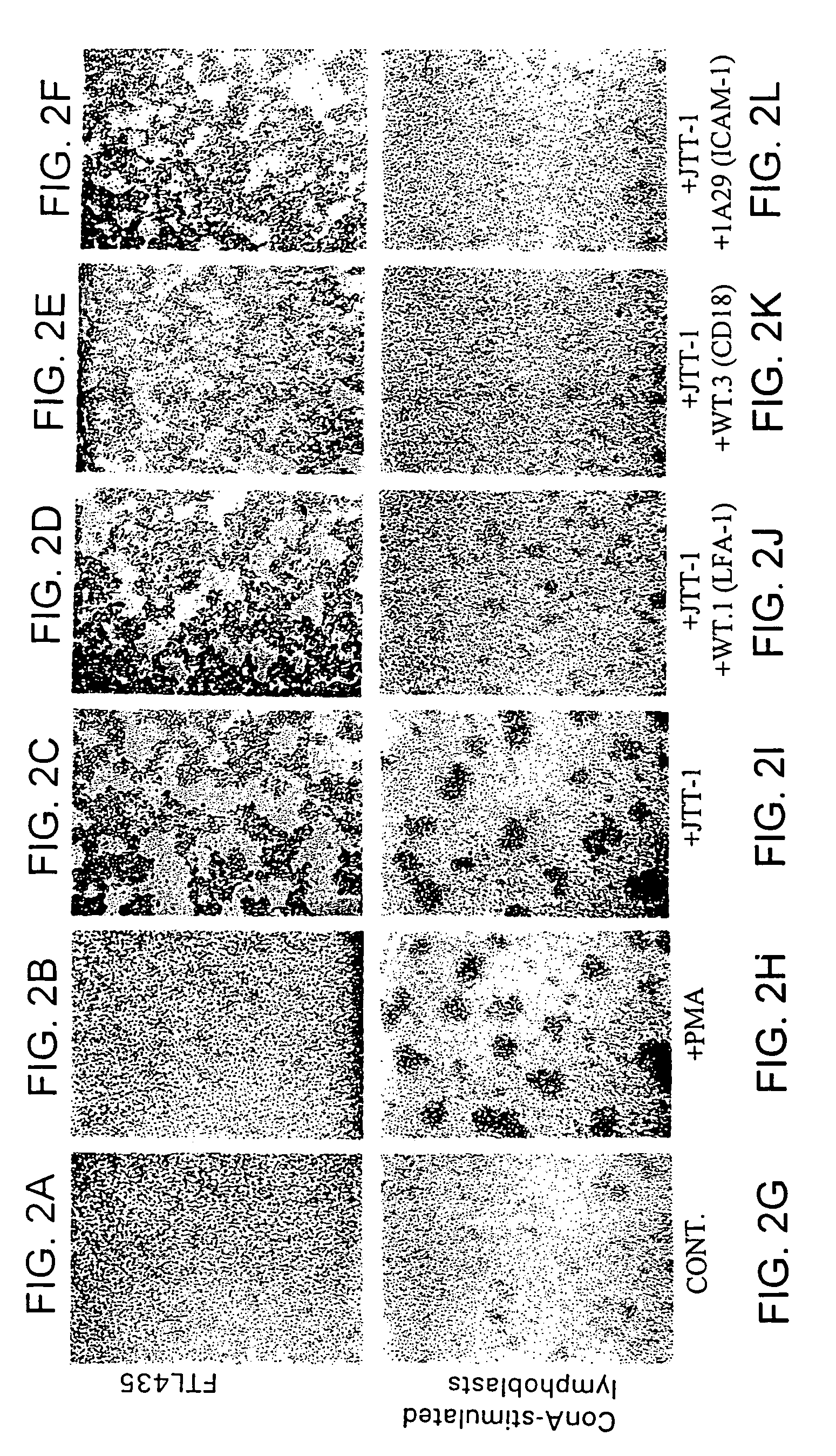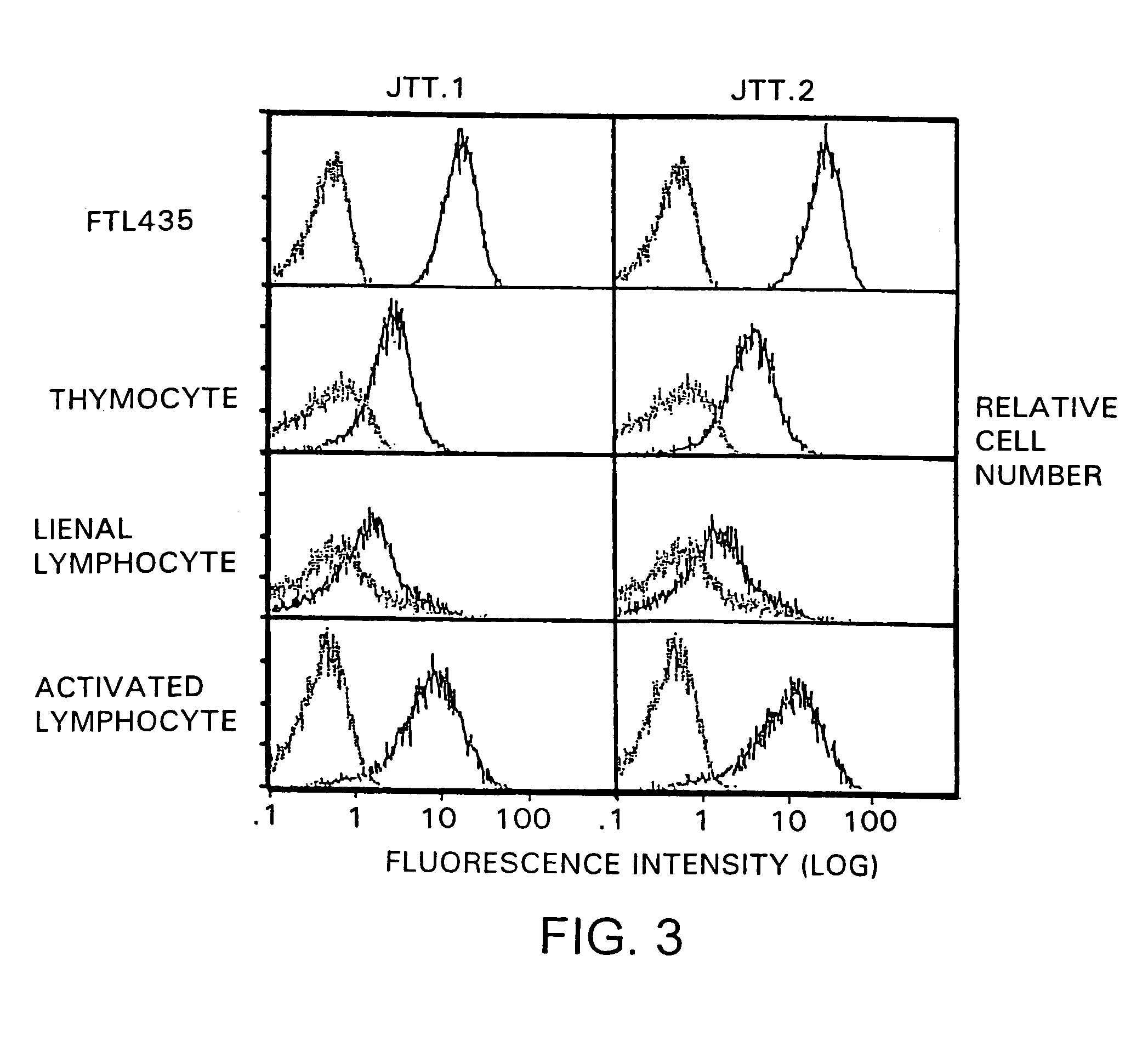Antibodies to JTT-1 protein, cells secreting such antibodies, and methods of making such antibodies
- Summary
- Abstract
- Description
- Claims
- Application Information
AI Technical Summary
Benefits of technology
Problems solved by technology
Method used
Image
Examples
example 1
Preparation of Monoclonal Antibodies
[0329]Antibody-producing hybridomas were prepared according to the method of Köhler et al. (Omori et al., Blood, 81:101–111, 1993), and monoclonal antibodies were prepared according to the method of Kannagi et al. (Handbook of Experimental Immunology, 4:117.21–117.21, 1986).
[0330]First, rat thymoma cell line FTL435 cells were administered as an immunizing antigen to BALB / c mice into their footpad in an amount of 107 cells / mouse at intervals of 0, 7, 14, and 28 days. The mixture of the antigen with Freund's complete adjuvant was administered only in the first immunization. Two days after the last immunization, the lymph nodes of the mice were taken out and fused with mouse myeloma cells PAI (JCR No. B0113; Stocker et al., Res. Disclosure, 217:155, 1982) by the usual method to obtain many hybridomas producing monoclonal antibodies.
example 2
Screening of Hybridomas and Characterization of Monoclonal Antibodies
[0331]The hybridomas prepared in Example 1 were screened by analyzing the effect of the antibodies produced in the culture supernatant of the hybridomas on FTL435 cells, which were used as the immunogen. FTL435 cells (5×106 cells / ml, 0.1 ml) were seeded into each well of a 96-well microtiter plate and cultivated at 37° C. for an hour in the presence of culture supernatant of each hybridoma (10 μg / ml each). The results obtained for hybridoma clones “JTT-1” and “JTT-2” are shown in FIG. 1 and FIG. 2.
[0332]It was revealed that a monoclonal antibody produced by hybridoma clone “JTT-11” (“JTT-1 antibody”) strongly agglutinated FTL435 cells (FIG. 1(b) and FIG. 2(c)) and that addition of “JTT-2 antibody” strongly inhibited the aggregation of FTL435 cells induced by “JTT-1 antibody” stimulation (FIG. 1(d)). The assays, in which no hybridoma supernatant was added, were used as controls (FIG. 1(a) and FIG. 2(a)).
[0333]In ord...
example 3
Reactivity of “JTT-1 Antibody” and “JTT-2 Antibody” to Various Cells
[0340]In order to analyze the expression pattern of molecules recognized by “JTT-1 antibody” and “JTT-2 antibody” in various cells, the reactivities of the antibodies to various cells were examined. Molecules recognized by “JTT-1 antibody” or “JTT-2 antibody” are designated “JTT-1 antigen” or “JTT-2 antigen”, respectively.
[0341]A five- to ten-week-old Wistar rat (150 to 250 g) was killed by anesthesia with diethyl ether. The thymus and spleen were taken out of its chest and abdomen, respectively, by celiotomy, and homogenized to prepare cell suspension. The resulting spleen cells were cultivated in RPMI1640 medium containing 2 μg / ml concanavalin A and 10% FCS at 37° C. for 3 days to prepare activated lymphoblasts.
[0342]FTL435 cells, thymocytes, spleen cells, and activated lymphoblasts (5×105 cells each) were reacted with “JTT-1 antibody” or “JTT-2 antibody” and then with FITC-labeled anti-mouse IgG (Cappel). The flu...
PUM
| Property | Measurement | Unit |
|---|---|---|
| Composition | aaaaa | aaaaa |
| Surface | aaaaa | aaaaa |
| Pharmaceutically acceptable | aaaaa | aaaaa |
Abstract
Description
Claims
Application Information
 Login to View More
Login to View More - R&D
- Intellectual Property
- Life Sciences
- Materials
- Tech Scout
- Unparalleled Data Quality
- Higher Quality Content
- 60% Fewer Hallucinations
Browse by: Latest US Patents, China's latest patents, Technical Efficacy Thesaurus, Application Domain, Technology Topic, Popular Technical Reports.
© 2025 PatSnap. All rights reserved.Legal|Privacy policy|Modern Slavery Act Transparency Statement|Sitemap|About US| Contact US: help@patsnap.com



